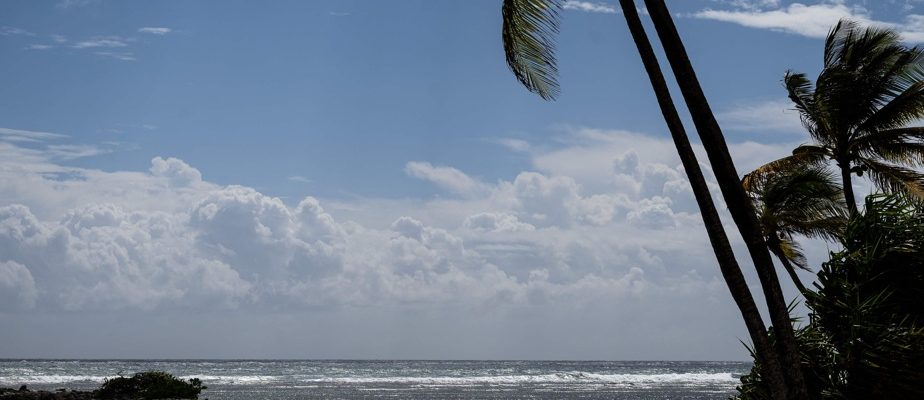(Sainte-Anne) These are two pallets precariously balanced which now form a small bridge, replacing the sandy path which connected two pieces of the beach in the town of Sainte-Anne, eaten away by coastal erosion, in the French archipelago of Guadeloupe.
The sand lost up to 30 meters in extent facing the Caribbean Sea at certain points between 2011 and 2023, according to studies. Notably opposite a restaurant at the end of a beach in Sainte-Anne, whose terrace offers a view of a lagoon and coconut trees, an idyllic setting popular with many tourists.
“It’s dangerous now,” laments Stéphanie Mezzasalma, the manager of the hotel-restaurant, pointing out the holes that open in the ground and which force her to accompany her customers in the evening to this poorly lit beach at this location.
At the head of the establishment for three years, she had to riprap the shore to prevent the building from collapsing, just to gain a few years.
“Except that we are not allowed to touch the coastline by ourselves,” recalls Andy, her husband. “But we asked the town hall, they referred us to the environment, planning and housing department, which referred us to maritime affairs, which referred us to the agency of 50 geometric steps” , a cooperation tool between the State and coastal communities.
A complicated situation for managers, who are not the only ones in this situation.
Close to their establishment, tourist residences are taken over by water, the fault of this coastal erosion whose causes are now well known: cyclones, mortality of coral reefs and seagrass beds, installation of dikes modifying the currentology, withdrawal of sargassum from mechanical excavators, rising sea levels due to climate change…
In its report on the issues linked to the retreat of the coastline, the Center for Studies and Expertise on Risks, Mobility and Development (CEREMA) estimated that in Guadeloupe, 87 buildings of various activities and 11 homes would be threatened within five years.
Re-sanding
According to the scenarios planned for 2050, described as realistic by CEREMA, a total of 552 housing units and 181 buildings for economic use would be affected on the archipelago. In 2100, in the event of inaction in the face of climate change, forecasts are around more than 5,100 housing units and 1,812 economic buildings affected.
These figures place the archipelago at the top of the French overseas departments most affected by the phenomenon. In the communes of Petit-Bourg or Capesterre-Belle-Eau, residents whose homes on cliffs threatened to fall due to erosion have already been displaced or ordered to evacuate the area.
“Since March, we have awarded contracts to refine this study of the retreat of the coastline which will give us detailed forecasts very adapted to our territory and allow us to make decisions on our 15 km of coastline where we have very configurations. different: beaches, cliffs, forests, etc. », Explains to AFP Garry Pisiou, the environmental director of the commune of Sainte-Anne.
This Monday, he participated with counterparts from other municipalities, elected officials and administrative staff, in a workshop offered by the French Biodiversity Office (OFB).
“We imagine a project to develop the beach in the town of Sainte-Anne, a bit in the spirit of a hackathon (meeting of experts to quickly carry out a project, Editor’s note) and at the end, the participants must deliver a notebook special technical clauses which accompany public works contracts, in the spirit of preserving biodiversity,” explains Noémie Djellid, of the OFB.
Enough to inspire all of Guadeloupe’s coastal communities to deal with erosion. “In Gosier, the town’s beach, also very popular, is eroding at full speed,” laments Cindy Valey, director of the environment in this neighboring town of Sainte-Anne. There, the beach showers could be moved back, the parking lot reformed, the shops and beach bars removed from the sand.
In Sainte-Anne, we are considering resurfacing in the short term. “We must find sand with a particle size equivalent to ours and whose sampling would be done without consequences for the environment,” underlines Garry Pisiou. In the longer term, a revegetation program could concern this beach, to maintain the sand and, if possible, economic activity.
